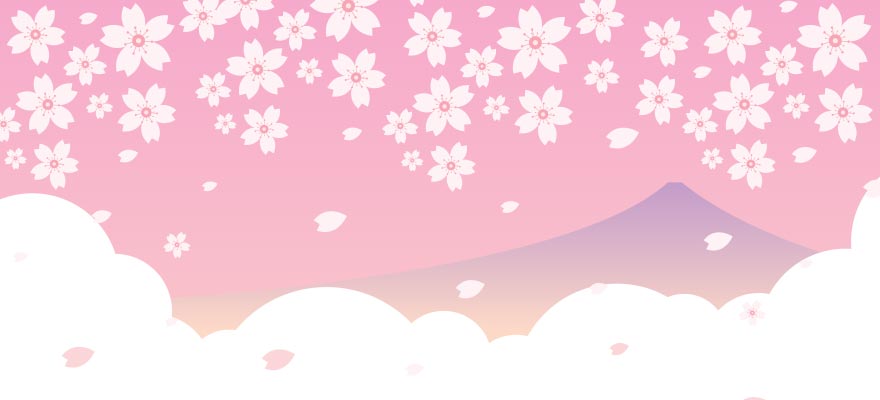Home > Highlighting JAPAN >Highlighting Japan April 2014>Student's Corner
Highlighting JAPAN
Student's Corner
Hanami
Cherry Blossom Viewing

A few pale pink petals drift lazily down, their gentle descent framed by a blue spring sky, every whisper of the breeze sending them dancing on a detour from their fluttering journey to the earth. With such a subtle hue, one could be forgiven for mistaking them at first glance for white. But viewed against the few stray wisps of cloud, it's possible to see these cherry blossom petals are indeed a delicate pink.
Of course, cherry blossoms can range in color from creamy white to deep pink depending on the species of the tree, and every spring a kind of dreamy craze comes over the whole of Japan as all of its cherry trees, or sakura, begin to bloom. At this time of year more than any other, the whole country stops to reflect and marvel at the beauty of nature and transience of life.
The practice of admiring the cherry blossoms is known in Japan as hanami — literally, 'flower viewing.' The most popular way to practice hanami is to have a picnic under a cherry tree, and while any cherry tree will do, some parks and castles are famous for having hundreds or even thousands of them. A few particularly special places include Hirosaki Castle in Aomori Prefecture, Shinjuku Gyoen in Tokyo, Arashiyama in Kyoto and Kumamoto Castle in Kumamoto. But you're never far from a cherry tree almost no matter where you happen to be in Japan.
During hanami season, it's not unusual to attend several blossom-viewing parties. You might celebrate once with your family, another time with school friends, again with your co-workers and still again with your friends from a club or hobby.
Once the picnic blankets and ground cloths are spread out, it's time to break out the food and drinks! Adults like to drink sake and beer, and everyone eats delicious, boxed bento lunches. Some people just buy their food at a convenience store, but for a special experience, exquisite stacked and lacquered lunch boxes are filled with scrumptious treats like inari-zushi (sushi rice wrapped in sweet tofu skins), tamago-yaki (Japanese-style rolled omelets) and onigiri (rice balls). It's also possible to eat the leaves and petals of the cherry trees themselves. Popular ways to do this include eating the leaves with mochi (soft pounded rice cake) or pickling the blossoms. What a pleasure to lounge under a pink cherry tree while plucking delectable morsels out of a beautifully painted lunch box!
Hanami has a long tradition in Japan. In ancient times, blossoming cherry trees told farmers of the coming of spring and the beginning of the planting season. The way the blossoms fell was even said to predict how good the year's rice crop was going to be - so people would go among the cherry trees and offer sacred wine in the hopes of a good harvest. More than a millennium ago, people in the royal court used to like composing poetry just for flower viewing.
People still eagerly anticipate the start of the hanami season today, and there are special announcements on the news about where the sakura have started to bloom and when people can expect the blossoms to arrive in their local area. Some people even travel with the blooms as they spread northward, wending their way from the southernmost prefecture of Okinawa in January to the northern tip of Hokkaido in May.
As beautiful as hanami is, it's also brief. In just a week or so, that fluffy field of pinky white above the trees will have tumbled down to blanket the grass. A week after that, the trees will be green and those pink flurries will only be a memory, blown off by the wind and washed away by the spring rains. All that remains will be a reminder to appreciate fleeting beauty while it's there.
© 2009 Cabinet Office, Government of Japan






